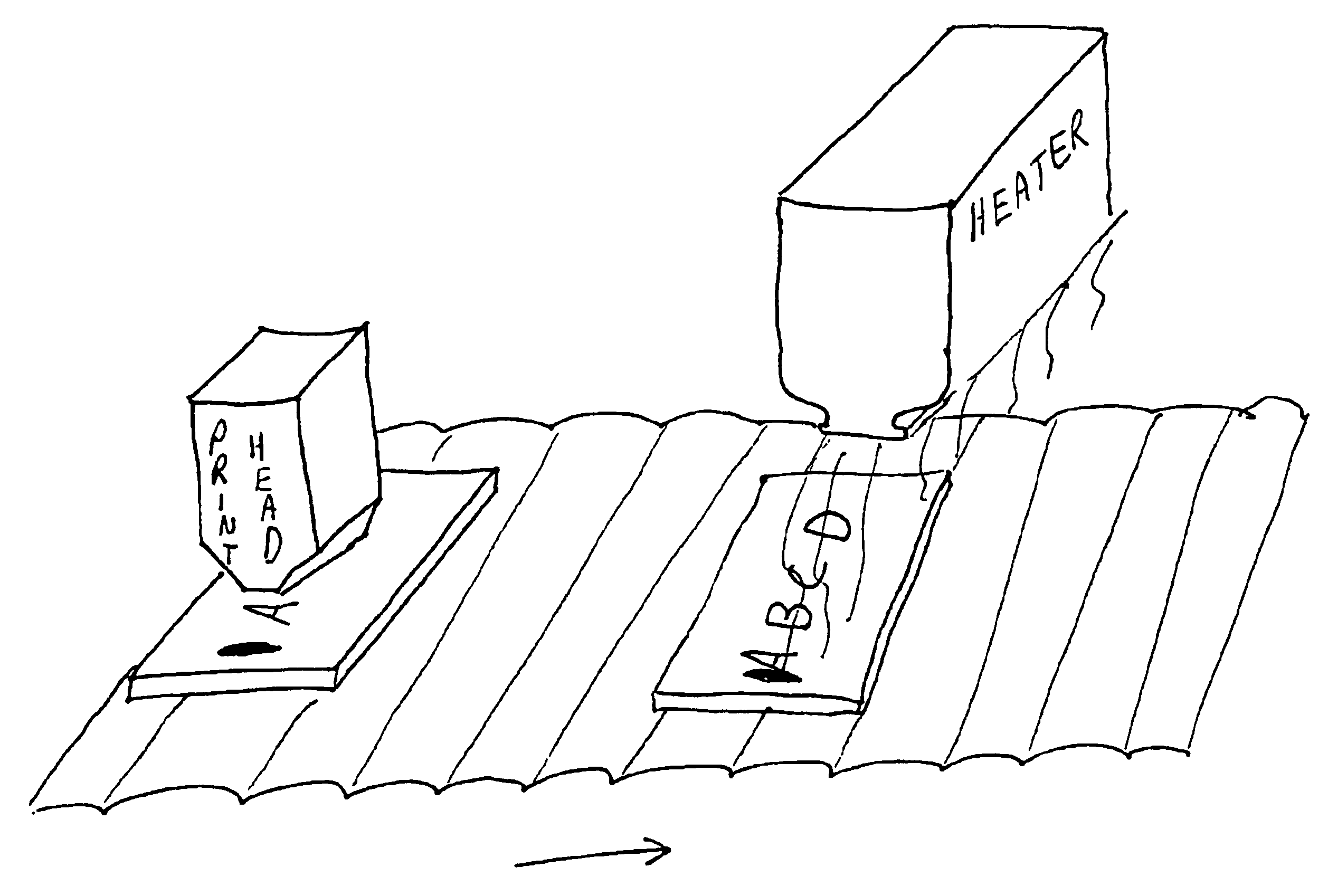Method for custom imprinting plastic identifier tags
a technology of plastic identifiers and labels, applied in the field of plastic identifier labels, can solve the problems of insufficient identification of cattle ownership by different colors of plastic ear tags, high cost of other elements of tag production, and custom stamp blocks to be produced, so as to achieve greater flexibility in image selection, cost-effectiveness, and safety for end users.
- Summary
- Abstract
- Description
- Claims
- Application Information
AI Technical Summary
Benefits of technology
Problems solved by technology
Method used
Image
Examples
Embodiment Construction
[0018]Imprinted plastic tags for identifying property (plastic ear tags for cattle, for example) are well-known. These tags are today typically made of polyurethane and are available from a number of suppliers, the supplier presently with the greatest market share being Temple Tag, Inc. of Little River, Tex. The present method involves use of conventional plastic ear tag blanks, and in no way requires changes to such substrate.
[0019]Clearly, printing a plastic tag blank with a conventional computer ink jet printer would in no way provide a sufficiently durable image for end-use. However, the current inventors have discovered that just such an image can be “welded” to the plastic tag blank in such a way as to produce an exceptionally durable image.
[0020]The present inventors have discovered that one may “weld” an ink jet printed image onto (actually into) a plastic tag blank by impinging the printed tab blank with heated air, or applying radiant heat to the tag blank. The heat source...
PUM
 Login to View More
Login to View More Abstract
Description
Claims
Application Information
 Login to View More
Login to View More - R&D
- Intellectual Property
- Life Sciences
- Materials
- Tech Scout
- Unparalleled Data Quality
- Higher Quality Content
- 60% Fewer Hallucinations
Browse by: Latest US Patents, China's latest patents, Technical Efficacy Thesaurus, Application Domain, Technology Topic, Popular Technical Reports.
© 2025 PatSnap. All rights reserved.Legal|Privacy policy|Modern Slavery Act Transparency Statement|Sitemap|About US| Contact US: help@patsnap.com


